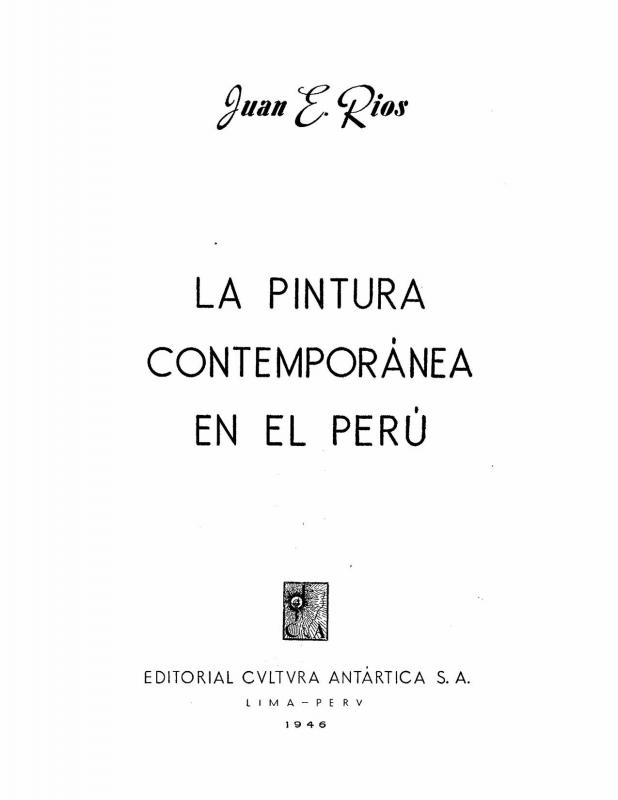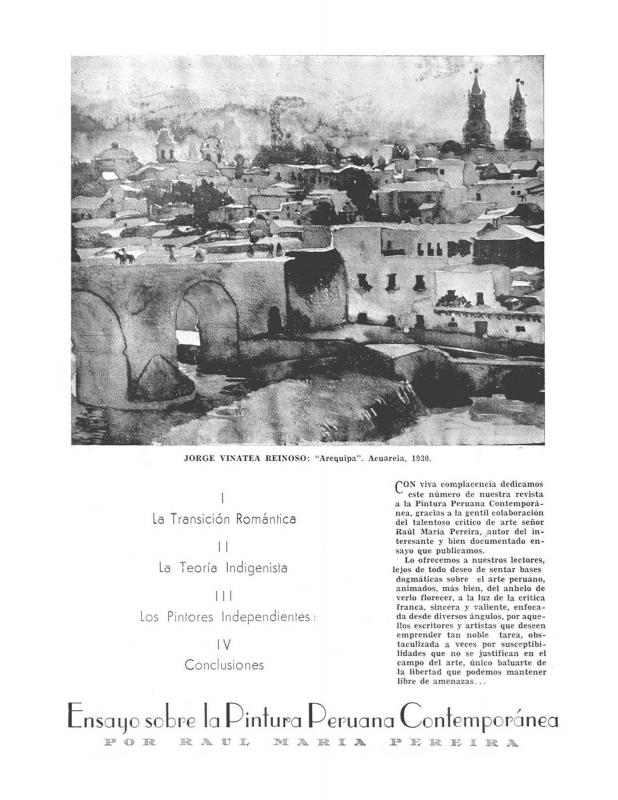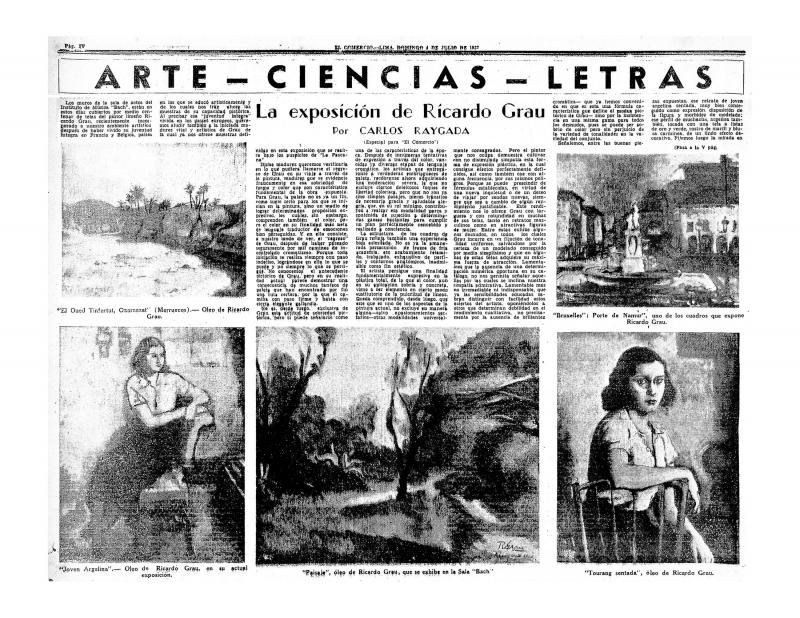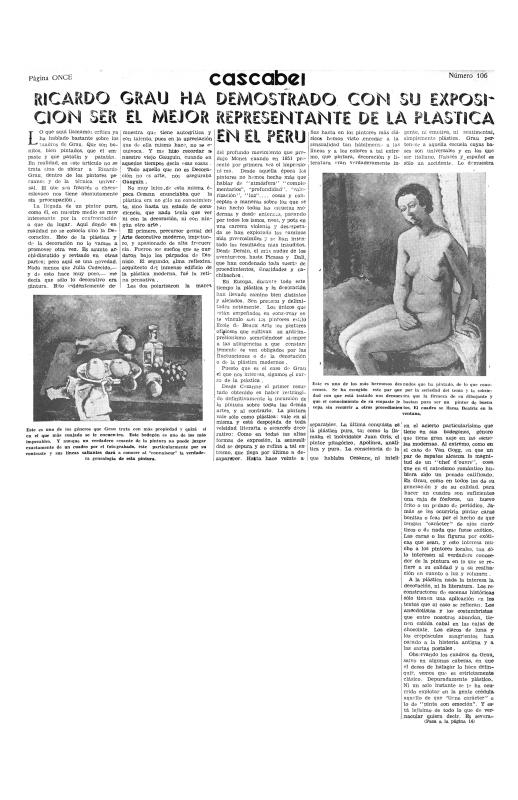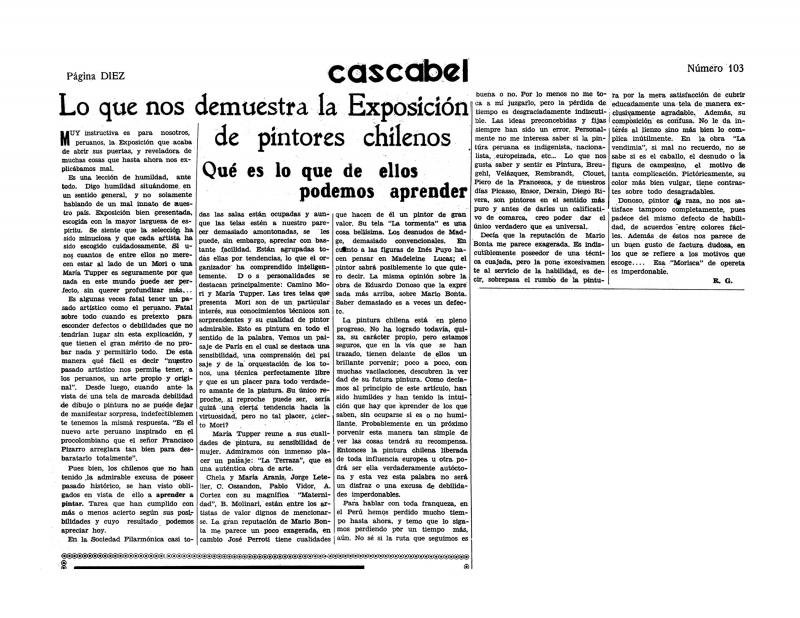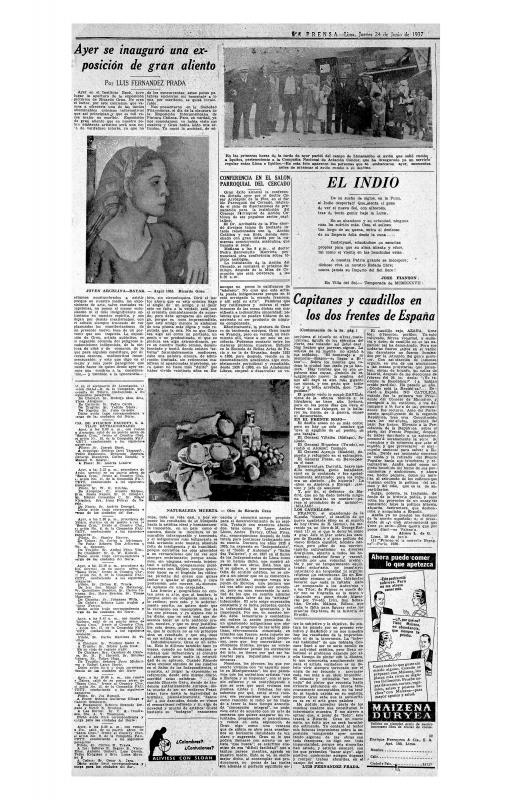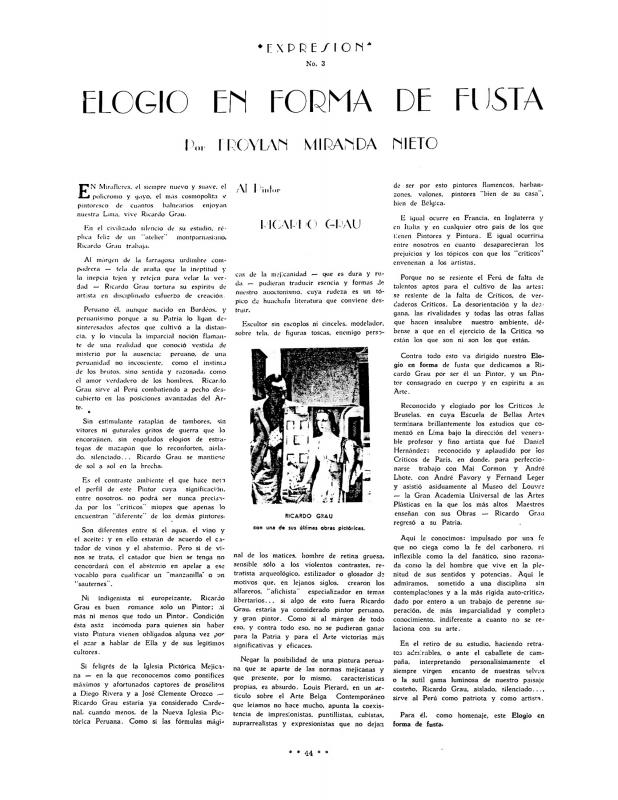An art columnist for the newspaper La Prensa, Raúl María Pereira reviewed a great many exhibitions. Two of his most important essays set out to take stock of Peruvian painting from the first half of the twentieth century. The first of them was published in 1939, a year when attacks on Indianism grew harsher. It formed part of a wider discussion that included hostile comments by academic painter Enrique Domingo Barreda and by surrealist poet César Moro.
In this brief article, Pereira is extremely critical of Indianism and of the tenure of its primary framer, José Sabogal, as the director of the Escuela Nacional de Bellas Artes (ENBA). From the author’s formalist perspective, the Indianist agenda is incompatible with a true understanding of art. Three years later, he voiced an even more radical position in an essay that questioned not only Indianism, but also still-important academic artists from the beginning of the century. On the basis of the modernist European canon, Pereira attempted to do away with Peruvian art’s immediate past, providing a vision of twentieth-century Peruvian painting that was upheld for a long time. Juan Ríos looked to Pereira’s assessments in La pintura contemporánea en el Perú (1946). The two men had worked together at Nuestro Tiempo (1944), a journal that laid out new positions in Peruvian art. Unlike the eclectic Pereira, Ríos believed that Peruvian painting could only emerge with the transformation of the social conditions in the country—which is what had happened in Mexico. Ríos’s open communist sympathies were in concert with a period marked by political upheaval: democratically elected president Luis Bustamante y Rivero (in office from 1945 to 1948) was ousted by a military coup staged by General Manuel A. Odría.
[For additional information, see in the ICAA digital archive the following articles: Juan E. Ríos’s “La pintura contemporánea en el Perú” (doc. no. 1293275); Raúl María Pereira’s “Ensayo sobre la pintura peruana contemporánea (doc. no. 1293152); Carlos Raygada’s “La exposición de Ricardo Grau” (doc. no. 1146716); Carlos More’s “Ricardo Grau ha demostrado con su exposición ser el mejor representante de la plástica en el Perú” (doc. no. 1146600); Ricardo Grau’s “Lo que nos demuestra la Exposición de pintores chilenos: qué es lo que de ellos podemos aprender” (doc. no. 1146583); Luis Fernández Prada’s “Ayer se inauguró una exposición de gran aliento” (doc. no. 1144189); and Froylán Miranda Nieto’s “Elogio en forma de fusta” (doc. no. 1144173)].

